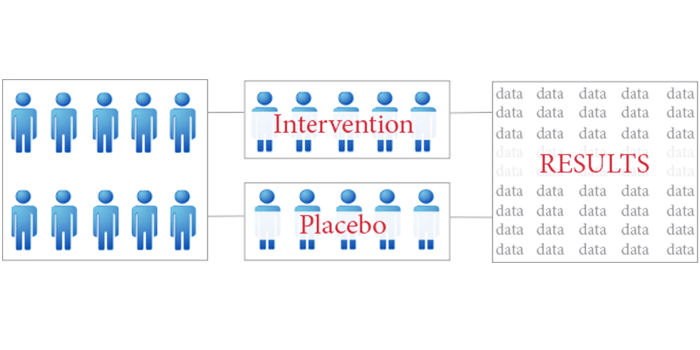Intervention studies

In order to study the effect of eating certain foods or nutrients, researchers often use so-called intervention studies. In such studies, the researchers randomly divide the trial subjects into different groups. People in the two groups then either have to eat the food or nutrient whose effect the researchers want to study or a placebo that does not have the characteristics, which the researchers are studying.
Intervention studies are often performed as double blinded studies. That is, both trial subjects and researchers find out who received treatment only after the study is completed. Intervention studies can provide evidence of the effect of consuming foods/nutrients, thereby forming dose-response data which is necessary in a risk-benefit assessment. Dose-response data show the effect of a given intake of a food or nutrient. In addition, a hypothesis about a possible effect of a specific food/nutrient is relatively easily tested in a risk-benefit assessment, before a more comprehensive intervention study is initiated.
The Research Group for Risk Benefit at the National Food Institute has e.g. completed three intervention studies, in which the researchers have studied the effect of vitamin D on different population groups.
Optiford (2000-2005): A European research project, which looked at vitamin D status in five European countries as well as the effect of vitamin D intake on status and bone health in different populations. Read more on the project’s website.
VitmaD (2009-2015): The study examined whether Danish families can maintain a satisfactory vitamin D level in their blood during winter by eating vitamin D fortified bread and drinking fortified milk. Read more about the project in a news item from the National Food Institute: Vitamin D fortification of milk and bread works.
ODIN Food (2013-2018): The study is part of a large European research project on vitamin D and pertains to vitamin D deficiency in Danish women and women of Pakistani origin. ODIN Food investigates whether vitamin D status in women at risk of vitamin D deficiency is improved by eating four different types of vitamin D fortified foods.
Contact
Rikke Andersen Senior Researcher rian@food.dtu.dk